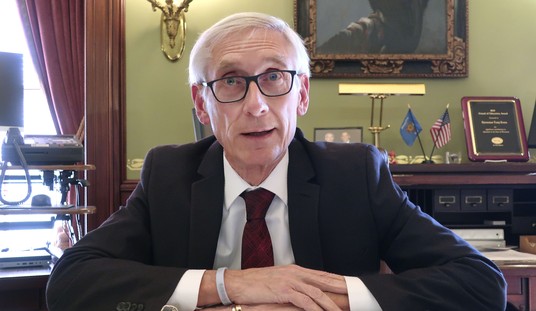Now that Bernie Sanders has become a serious candidate for president, it is inevitable that the media will pay attention to every aspect of his life. In 1963, when Sanders traveled to Israel to work on a kibbutz there were scores of American Jewish students who also volunteered. So it is rather strange that Sanders has consistently refused to tell the press about his time there and the kibbutz he worked on. When asked, he and his campaign dodged the issue.
Why would Sanders not answer such a simple question?
Now we have the answer from the Times of Israel. In 1990, Sanders, who was preparing to assume his newly elected position as a member of Congress, was interviewed by Israeli journalist Yossi Melman. Sanders told him that he visited Israel “as a guest of the leftist Zionist Hashomer Hatzair movement and stayed at its affiliated kibbutz, northeast of Haifa.”
Calling Kibbutz Shaar Haamakim simply “leftist” does not sufficiently describe the ideology of Hashomer Hatzair members. At the time, most American students who were Zionists belonged to Habonim, a mainstream group affiliated with Israel’s governing party, Labor.
Hashomer Hatzair, to the contrary, was the affiliate of Mapam, the coalition political group in Israel that united a few different left-wing groups into one political organization. By 1969, Hashomer Hatzair had entered into a unity pact with Labor. Despite this, its own members remained left-wing socialists. Today, its descendants support Israel’s far left political party, Meretz.
But in 1963 when Sanders worked on Hashomer’s kibbutz, its members considered themselves Marxist-Zionists, and they held a pro-Soviet orientation which included supporting Soviet foreign policy. Their ideological orientation on Zionism and socialism came not from the social democrats of the Socialist International, who were strongly anti-Communist and anti-fascist during the years of World War II (like Germany’s Willy Brandt), but from a rather unknown figure, a Zionist named Ber Borochov.
I knew members of Hashomer Hatzair in the same period that Bernie worked on their kibbutz. They would always urge me to read Borochov’s books. Although he passed away in 1917, too early to see the horrendous results of the Bolshevik Revolution, Borochov’s followers argued that he had proved that “socialist Zionism” had to be Marxist-Leninist. Their only criticism of the official Israeli Communist Party was its refusal to see that Stalin was wrong to argue that Jews did not need their own nation and that they instead should work within their own countries to foment a communist revolution. (If you want to know more about Borochov, Wikipedia accurately summarizes his views.)
Another young person who gravitated to the group was Noam Chomsky, who told an interviewer: “I liked the kibbutz life and the kibbutz ideals.” In a Tablet interview conducted by David Samuels, Chomsky said he had gravitated to a Hashomer Hatzair kibbutz, but could never actually join it. That was “because in those days they were split between Stalinist and Trotskyite, and I was anti-Leninist.” But he admired their commitment to a binational state and their efforts to create “Arab-Jewish working-class cooperation” and a “socialist binationalist Palestine.” A binational state would in effect have meant the end of Israel as a Jewish state.
Since the news broke yesterday, a few conservative websites have written about the importance of Sanders’chosen kibbutz. At Frontpagemag.com, Daniel Greenfield describes its origins and notes how it mourned the death of Joseph Stalin in 1953, ironically just as the Soviet dictator was preparing a major purge of all Soviet Jews, in the so-called “Doctors’ Plot.” In the American Thinker, Thomas Lifson too says that Sanders’ stay at the Hashomer kibbutz “is consistent with Sanders’s honeymoon trip to the Soviet Union” as well as his later visits to Nicaragua and Cuba.
These two articles have led writer Nathan Guttman in The Forward to accuse the two conservatives of “Red-Baiting from [the] Right.” He argues that while from today’s perspective Sanders’ history on the kibbutz may seem damning, it did not at the time, because all Zionists know that Hashomer Hatzair made worthwhile contributions to the building of Israel, especially in the “pre-state Zionist military force, the Haganah,” as well as its shock troops, the Palmach.
Guttman’s main argument, however, is that Israel’s guiding ideology at the time and its culture “was socialist.” He thereby makes no distinction between the moderate version of socialism held by Israeli Labor Party members like David Ben-Gurion and that of openly Stalinist Israelis who belonged to Hashomer Hatzair. He does acknowledge that in 1973 the kibbutz Sanders attended was “still a socialist heaven,” with communal sharing and regular singing of the Internationale. Even Guttman can see that “Sanders might have a hard time explaining all this to Americans — conservatives and liberals alike.”
In yet another article in The Forward, Naomi Zeveloff writes that Hashomer Hatzair’s kibbutz members learned “valuable lessons about life — and a political imperative to improve the life of others.” She acknowledges that Sanders’ time there might be when he “apparently sharpened his socialist ideals a half-century ago.” Zeveloff adds that they “had a strong admiration for the Communist system in the Soviet Union.” They heard about the Soviet gulags, but considered that news to be false reports from renegades. No wonder they proudly flew a red flag at outdoor kibbutz events. We also learn that relatively few people volunteered at the kibbutzim affiliated with Hashomer Hatzair before 1967, making Sanders’ 1963 visitation a rare exception among American volunteers.
Actually, there was much substantiated evidence that anyone who wanted could have used to learn about the existence of the gulags, as well as the other repressive aspects of Stalin’s criminal rule. They chose not to know, and to condemn all evidence as “capitalist propaganda.” Clearly, to find all this out and inform American voters about the background of a potential presidential nominee is not “Red-baiting.” Using that term is a way for the Left to keep Americans from dealing with this new information.
Of course I do not know at all what Bernie Sanders’ specific views were at the time, but the evidence does indicate that back in the early ’60s he was part of the pro-Communist wing of the left. Now, as a democratic socialist, he eschews revolution and wants the U.S. to emulate the sclerotic European social democracies via a “political revolution,” whatever that is.
Sanders should tell us when and why he moved away from his former beliefs. What made him change from the views he held in the 1960s? If he has, there is no need for him to hide the nature of the kibbutz he worked on.









Join the conversation as a VIP Member